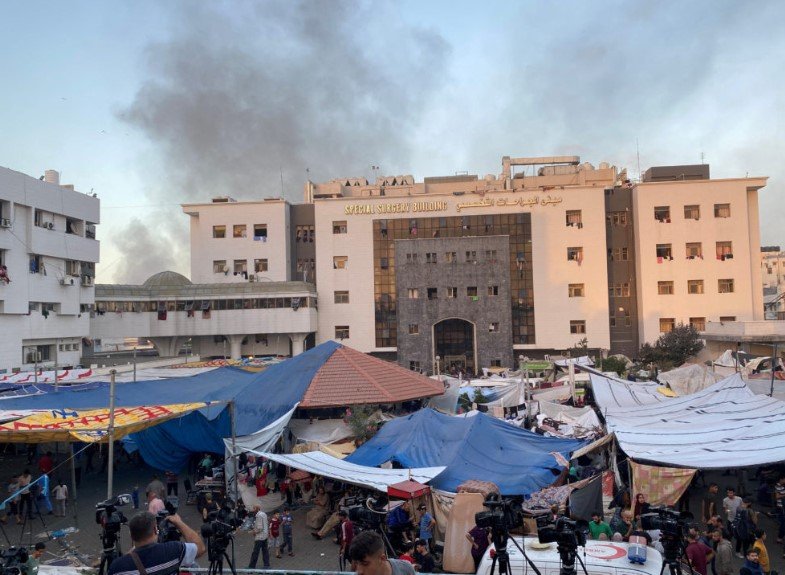Gaza’s forensic teams at Nasser Hospital are racing against time to examine 195 bodies returned by Israel under a recent ceasefire deal, with many showing clear marks of abuse and torture. This comes amid calls for international probes into alleged mistreatment of Palestinian detainees, as families seek answers about their loved ones’ fates in the ongoing aftermath of conflict.
Challenges in Forensic Examinations
Doctors in Gaza face huge hurdles in investigating these cases due to limited resources. At Nasser Hospital, the main site for these exams, there is no proper DNA testing or enough cold storage. Bodies arrive frozen, and once they thaw, quick decomposition sets in, making detailed autopsies nearly impossible.
Teams rely on basic methods like taking photos and samples right away. One doctor noted that without better tools, they can only document surface signs, leaving deeper questions unanswered. This lack of equipment slows down efforts to identify the dead and confirm causes of death.

Families waiting for news add emotional weight to the process. Many bodies come without names, just numbers, forcing relatives to check photos or visit the hospital in hopes of recognition.
Evidence of Abuse and Torture
Photos shared by health officials reveal disturbing details on the returned bodies. Many have wrists and ankles bound, deep bruises, and marks from tight restraints. Some show burns, fractures, and wounds that suggest severe mistreatment before death.
Experts outside the region say these signs point to possible torture, but full post-mortems are needed for proof. In Gaza, doctors describe cases where blindfolds left deep grooves around eyes, and cloths were tied around necks, raising fears of strangulation.
One forensic specialist highlighted how tight bindings cut off blood flow, causing tissue damage. These findings match reports from human rights groups about prison conditions.
- Bruises and marks from bindings on wrists and ankles
- Deep grooves from blindfolds around eyes
- Burns and fractures on various body parts
- Gunshot wounds, often between the eyes
- Signs of dissection or organ removal in some cases
Ceasefire Deal and Body Exchanges
The returns stem from a ceasefire agreement brokered in late 2024, which included swapping bodies as part of peace terms. Israel has handed over 195 Palestinian remains since October 14, 2025, in exchange for 13 Israeli hostages’ bodies.
This exchange happens through the Red Cross, with lorries carrying frozen bodies across borders. Gaza officials say most bodies are unidentified, complicating closure for families.
| Date | Number of Bodies Returned | Key Observations |
|---|---|---|
| October 14, 2025 | 45 | Many bound and blindfolded |
| October 15, 2025 | 45 | Signs of burns and fractures |
| October 16, 2025 | 45 | Evidence of tight restraints |
| October 17-22, 2025 | 60 | Additional marks of abuse |
Health ministry leaders urge global involvement to ensure fair investigations. They point to patterns that suggest systematic issues in detention.
The deal ties into broader peace efforts, but these revelations risk sparking new tensions. Recent events, like protests in the region, show how such issues fuel unrest.
Calls for International Investigation
Palestinian groups, including Hamas, demand probes by bodies like the International Committee of the Red Cross. They claim the signs prove crimes in Israeli prisons and want experts to review evidence.
Human rights advocates echo this, saying independent autopsies could clarify if deaths resulted from torture or execution. Without them, accusations fly without resolution.
Israel denies widespread abuse, stating bodies are handled per protocols. But Gaza doctors argue the evidence speaks for itself, pushing for transparency.
This situation highlights ongoing human rights concerns in the conflict. Similar claims arose in past mass grave findings at Gaza hospitals, adding to calls for accountability.
Impact on Families and Communities
For families, the pain is personal. Many gather at hospitals, viewing photos or remains to identify relatives missing for months. The lack of names means some may never know.
Communities in Gaza feel the broader toll, with trust in peace processes shaken. Health workers report rising mental health needs amid the grief.
One relative shared how seeing a loved one’s marked body brought both closure and anger. Stories like these underscore the human cost beyond statistics.
As investigations continue, experts stress the need for better resources to handle such cases. This could prevent future challenges in similar conflicts.
What do you think about these developments? Share your thoughts in the comments and spread the word to raise awareness.
